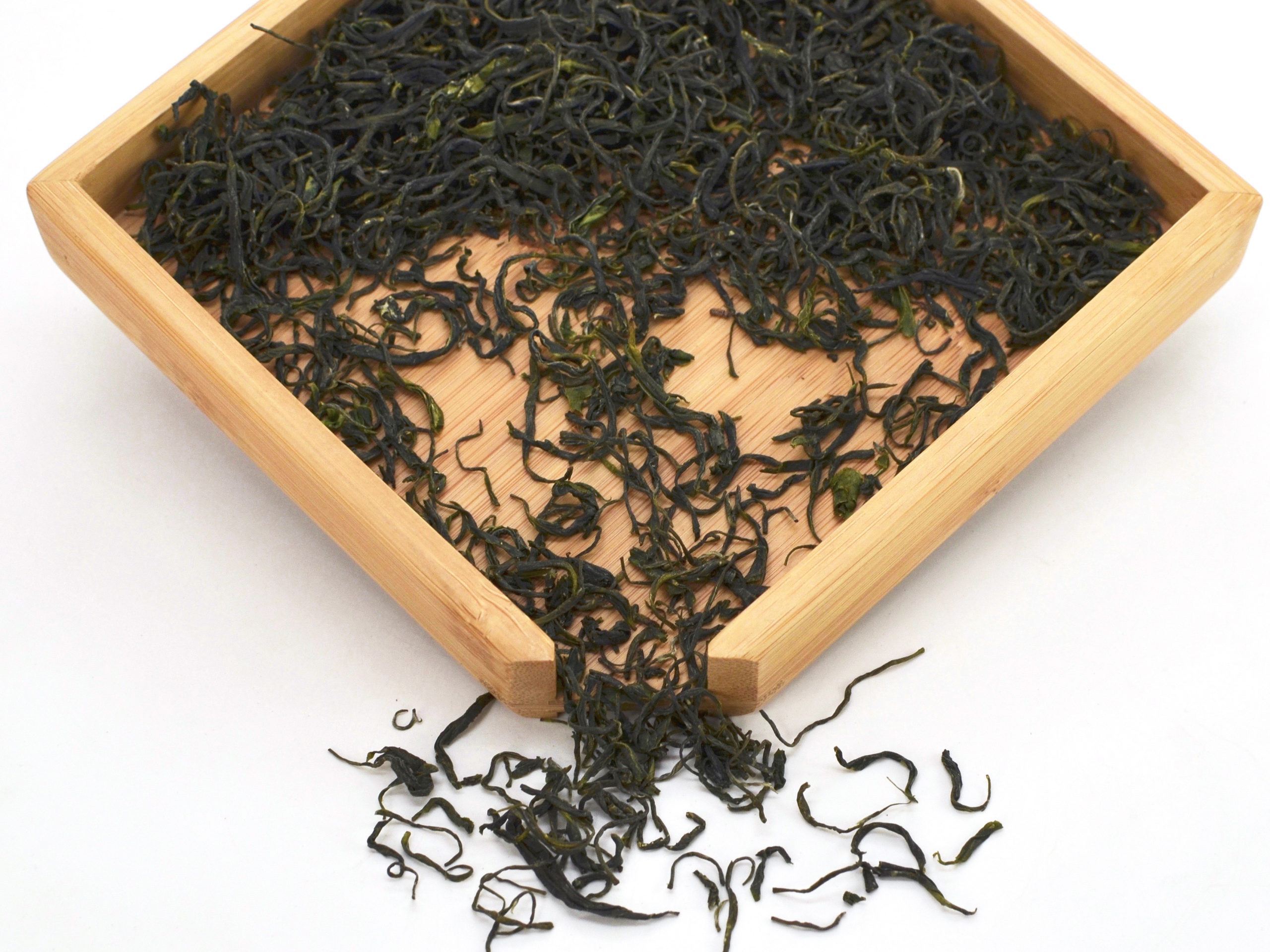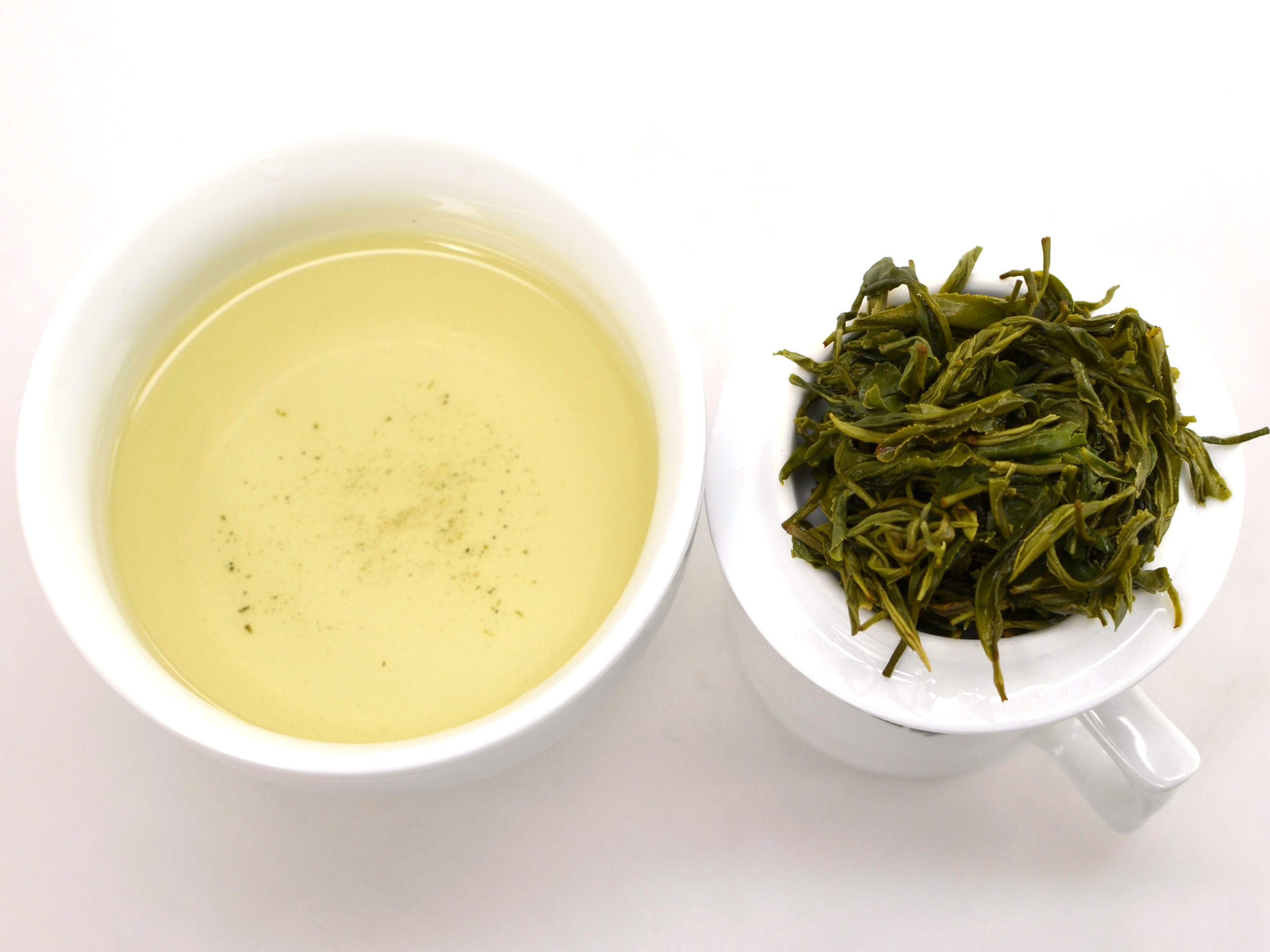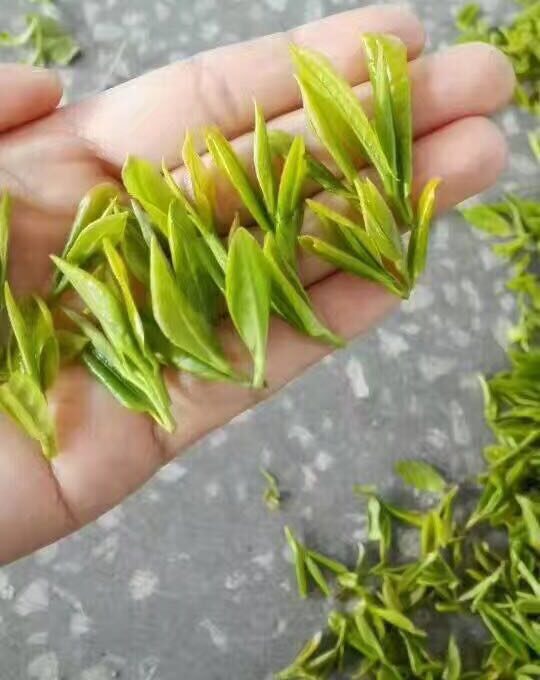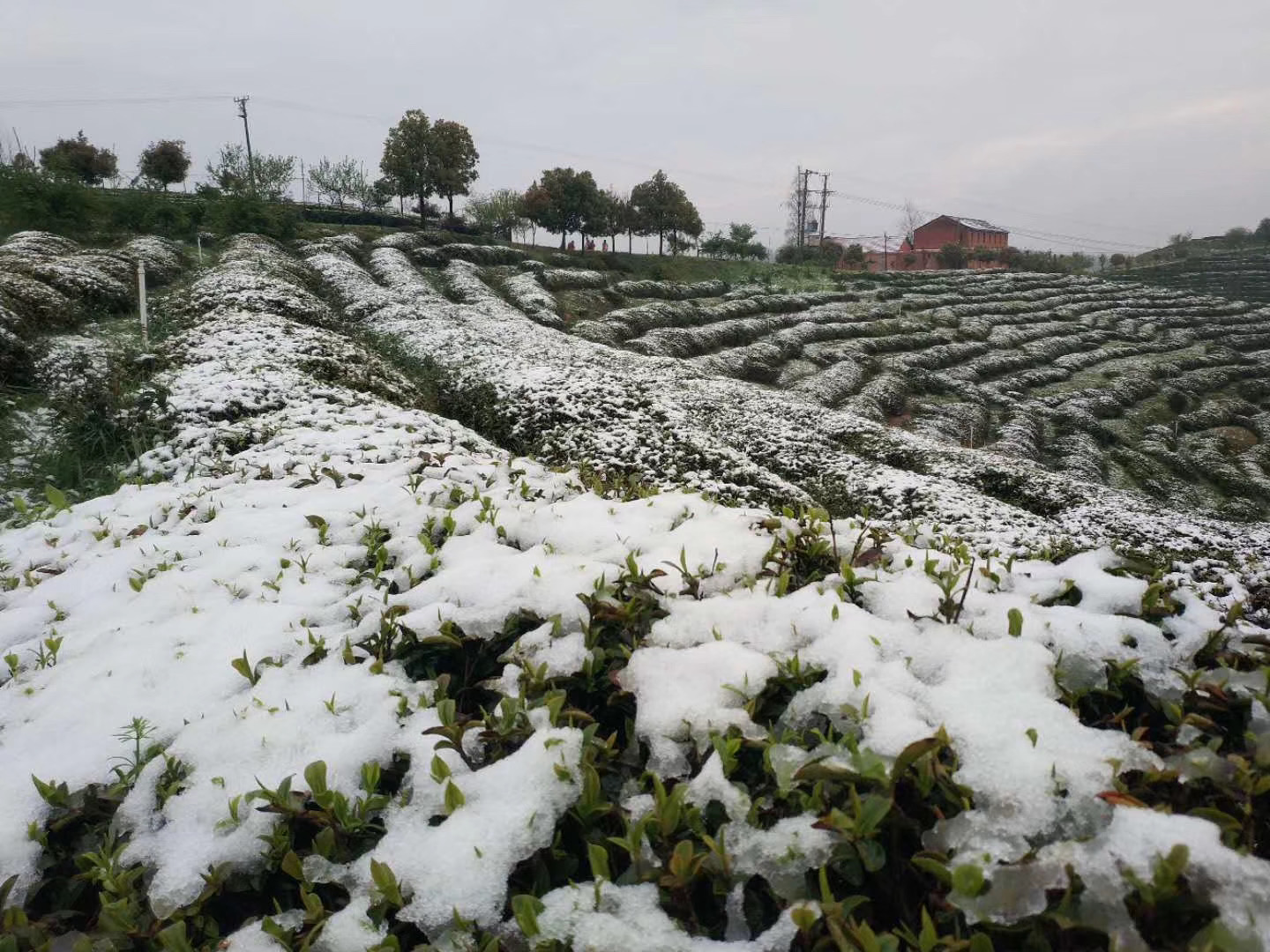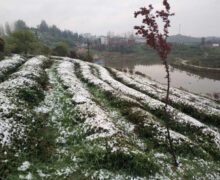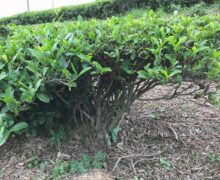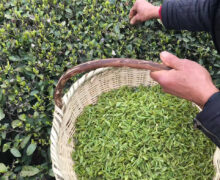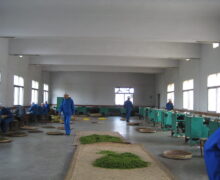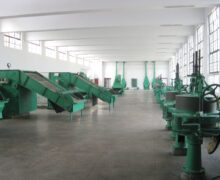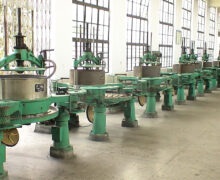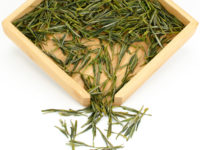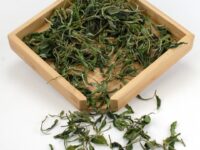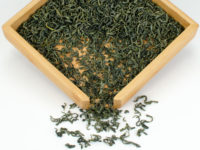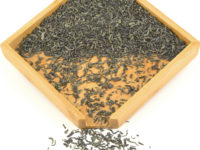Mao Jian (Misty New Top)
Organic Green Tea 2024
Excellent aroma and complexity at an everyday-drinker price. Light mineral astringency gives way to a softer, almost creamy, character and a sweet grass finish. This green tea retains flavor beautifully in a pint glass for casual sipping and thirst-quenching throughout the day.
- Tea Origin
- Suizhou City, Hubei Province, China
- Tea Bush
- Jiu Keng
- Tea Maker
- Liu Sanyun
- Harvest Time
- Mid April
- Plucking Standard
- One bud, two leaves
In Suizhou, with its long history of tea agriculture, tea permeates every area of life. The organic tea farm that produces Mao Jian (Misty New Top) was established in the Yunfeng Mountain area during the 1950s, although substantial farming did not begin until the 1980s and 1990s. Most of the plantings are the Jiu Keng tea bush, an extremely popular cultivar that is hardy, cold resistant, and richly flavored. These tea bushes grow on cloud-covered mountains 700 meters above sea level. The natural shade of the clouds encourages the development of sweet-tasting amino acids in the tea leaves. The flavor also benefits from the widely changing temperatures between day and night, which stimulate the development of other secondary metabolites and introduce complexity into the tea.
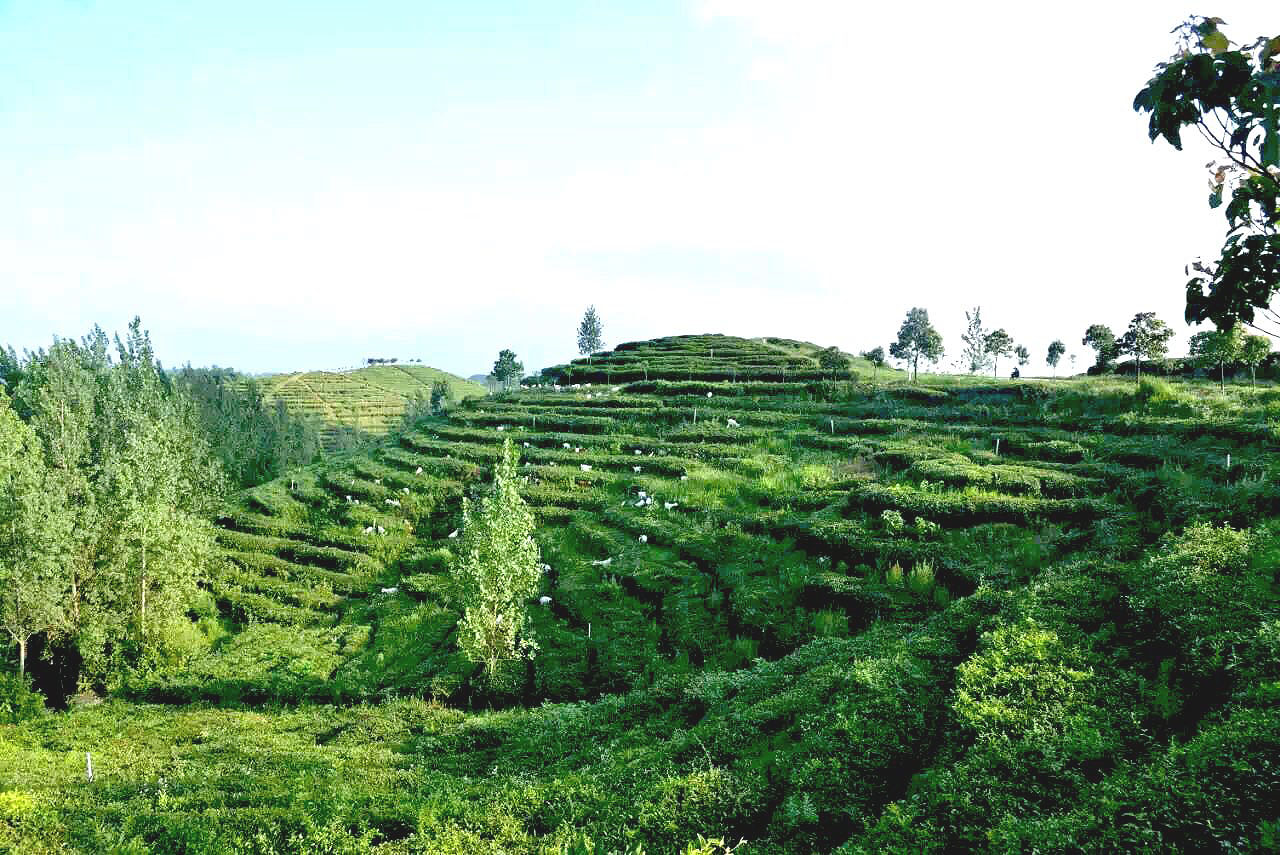
The organic tea gardens use natural fermented rapeseed hulls and goat manure as organic fertilizer. For weeding, two things are used: goats are allowed to graze on the garden, followed by human manual weeding. For pest control, sticky paper and solar powered bug lights are the primary methods.
Origin of Mao Jian
The Suizhou region in northern Hubei Province is famous for its long history in Chinese culture, with civilization there beginning as early as 4,500 years ago. It is regarded as the legendary home of the mythical ancient ruler, Shennong, as stories tell us, who was the first person to introduce the Chinese to tea. To this day, Suizhou claims the right to calling itself “Shennong’s hometown.” The tea saint Lu Yu (733 – 804 AD), who authored the world’s first book on tea, Cha Jing, mentions that tea began with Shennong.
In the myth of Shennong discovering tea, Shennong was chosen as a leader for his farming prowess and knowledge of herbs. Every day, he would spend time testing the effects of different herbs on his own body. On one particular day, he was poisoned 72 times. As he lay dying from so much poison, a tea leaf fell into his mouth. He reflexively chewed it and discovered that it purified his afflicted body. Tea was thus discovered by Shennong and introduced to his people as a healthful herb. This story has persisted in the modern culture of China where tea is still popularly regarded as detoxifying. Shennong’s legend began the use of tea as a herbal remedy for thousands of years but around 1,200 years ago, tea started to become a popular daily drink.
Making Mao Jian
Tea pickers will organize to harvest on days that are clear and without rain. Workers will head to the mountain very early, just as soon as they have enough light to see what they are plucking. They return at lunchtime to eat, and then return to pluck again in the afternoon. For this particular tea, they harvest pluckings at a standard of one bud and two leaves.
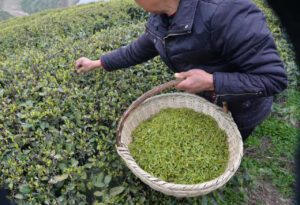
The leaves are withered on bamboo sheets to let them soften for processing. Once the tea is suitably withered, it is quickly roasted to de-enzyme it. This is accomplished by an oven-like heating element. After this step, the tea leaves are soft enough to knead into its twisted shape. The basic shape of the tea is fixed at this point. Finally, drying is completed with an oven-like drying machine. By the end, the residual moisture does not exceed 5-6%, keeping it shelf stable.
No chemical fertilizer, pesticide, or herbicide was used in the production of this tea. Click here to read more about our promise to fair trade and the environment.

